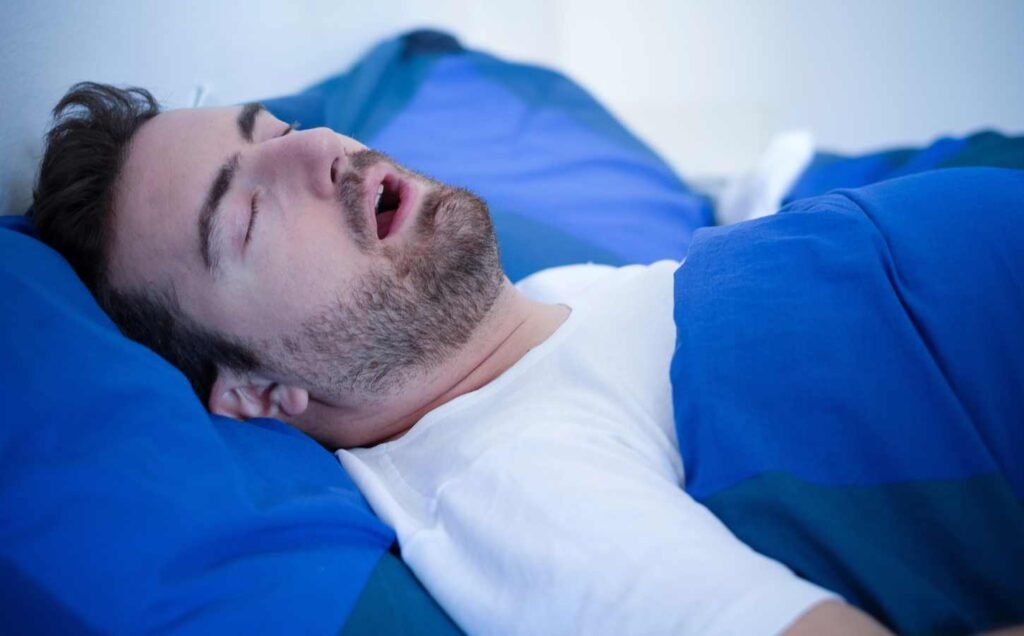The Epworth Sleepiness Scale is a self-assessment tool that measures daytime sleepiness.
Developed by Dr. Murray Johns in Melbourne, Australia, The Epworth Sleepiness Scale (ESS) is widely used by physicians and researchers to evaluate the severity of sleep disorders and the effectiveness of treatment.
The Epworth Sleepiness Scale consists of eight questions that ask individuals to rate their likelihood of dozing off or falling asleep in different situations, such as sitting and reading, watching TV, or sitting in a car. Each question is scored on a scale of 0 to 3, with a maximum score of 24 indicating the highest level of daytime sleepiness.
The Epworth Sleepiness Scale is a valuable tool for identifying individuals who may be at risk for sleep disorders such as sleep apnea, narcolepsy, or restless leg syndrome. It is also useful for monitoring the effectiveness of treatment for these conditions. By providing a simple and reliable way to measure daytime sleepiness, the ESS has become an important part of sleep medicine and research.
Understanding the Epworth Sleepiness Scale
Development and Purpose
The Epworth Sleepiness Scale (ESS) was developed by Dr. Murray Johns in 1991 as a self-administered questionnaire to assess an individual’s level of daytime sleepiness. The purpose of the ESS is to provide a simple and reliable diagnostic tool for excessive daytime sleepiness, which can be indicative of various sleep disorders such as narcolepsy, obstructive sleep apnea, and insomnia.
Scale Components and Scoring
The Epworth Sleepiness Scale consists of eight questions that assess an individual’s likelihood of dozing off or falling asleep in various situations, such as sitting quietly after lunch or while driving in traffic. Each question is scored on a scale of 0 to 3, with a total score ranging from 0 to 24. The higher the score, the greater the chance of dozing off or falling asleep in daily activities.
Usage and Application
The Epworth Sleepiness Scale is commonly used in sleep medicine as a diagnostic tool for excessive daytime sleepiness. It can be administered in a clinical setting or as part of a sleep study. The ESS can also be used to monitor the effectiveness of treatment for sleep disorders.
Interpretation of the Epworth Sleepiness Scale score is as follows:
- 0 to 5: Normal daytime sleepiness
- 6 to 10: Mild excessive daytime sleepiness
- 11 to 12: Moderate excessive daytime sleepiness
- 13 to 24: Severe excessive daytime sleepiness
The Epworth Sleepiness Scale is a valuable tool for clinicians to diagnose and monitor excessive daytime sleepiness. It can help identify individuals who may benefit from further evaluation for sleep disorders and guide treatment decisions.
Clinical Relevance and Limitations
Interpreting ESS Results
The Epworth Sleepiness Scale (ESS) is a widely used tool for assessing sleep propensity in clinical and research settings. ESS scores range from 0 to 24, with higher scores indicating greater sleepiness. A score of 10 or higher is generally considered clinically significant, indicating excessive daytime sleepiness. However, the interpretation of ESS results should take into account the individual’s usual way of life, education level, work, and mental health status, among other factors.
Challenges in Assessment
Although the Epworth Sleepiness Scale is a useful tool for evaluating sleepiness, it has some limitations. For example, the ESS-CHAD (Epworth Sleepiness Scale for Children and Adolescents) has been developed for use in pediatric populations, but its psychometric properties have not been fully evaluated. Additionally, the ESS may not be accurate in individuals with certain medical conditions or those taking certain medications.
The Epworth Sleepiness Scale also has some inherent limitations in its design. It is a self-assessment tool and relies on the individual’s subjective reporting of their sleepiness. This can be influenced by factors such as caffeine intake, alcohol consumption, and mood. The ESS may also not capture subtle changes in sleepiness over time, and additional testing may be needed to fully evaluate an individual’s sleep propensity.
Despite these limitations, the Epworth Sleepiness Scale remains a valuable tool for assessing sleepiness in both clinical and research settings. It can help doctors evaluate symptoms of hypersomnia and drowsiness, and can be used to monitor the effectiveness of treatments for conditions such as obstructive sleep apnea (OSA). However, it should be used in conjunction with other diagnostic tools and clinical evaluation to ensure accurate and comprehensive evaluation of sleepiness.
Reference
Johns MW. A new method for measuring daytime sleepiness: the Epworth sleepiness scale. Sleep. 1991 Dec 1;14(6):540-5.
Copyright and License
The ESS is copyrighted by the author, Dr. Murray Johns, and is licensed for use in clinical and research settings. Permission is required for any commercial use or modification of the scale.
Psychometric Properties
The Epworth Sleepiness Scale has been shown to have good reliability and validity in healthy adults and those with medical conditions such as OSA. However, its psychometric properties have not been fully evaluated in all populations, and caution should be exercised when interpreting results in certain groups.
Additional Testing
In some cases, additional testing such as polysomnography or multiple sleep latency testing may be needed to fully evaluate an individual’s sleepiness and diagnose underlying sleep disorders.
Limitations
The ESS has some limitations in its design and interpretation, and should be used in conjunction with other diagnostic tools and clinical evaluation to ensure accurate and comprehensive evaluation of sleepiness.
Research
There is ongoing research into the use of the ESS in various populations and its utility in predicting outcomes such as driving safety and work performance.
Score Interpretation
A score of 10 or higher on the ESS is generally considered clinically significant, indicating excessive daytime sleepiness.
Accuracy
The accuracy of the ESS may be influenced by factors such as caffeine intake, alcohol consumption, and mood, and should be interpreted in the context of the individual’s usual way of life and mental health status.
Healthy Adults
The ESS has been shown to have good reliability and validity in healthy adults, and can be a useful tool for evaluating sleepiness in this population.
Medical Condition
The ESS can also be used to evaluate sleepiness in individuals with medical conditions such as OSA, but its accuracy may be influenced by the presence of comorbidities or medications.
Medication
Certain medications can affect ESS scores, and caution should be exercised when interpreting results in individuals taking these medications.
Self-Assessment
The ESS is a self-assessment tool and relies on the individual’s subjective reporting of their sleepiness. This can be influenced by factors such as caffeine intake, alcohol consumption, and mood.
Usual Way of Life
The interpretation of ESS results should take into account the individual’s usual way of life, education level, work, and mental health status, among other factors.
Education Level
Education level may influence ESS scores, and should be taken into account when interpreting results.
Work and School
The ESS can be a useful tool for evaluating sleepiness in individuals who work or attend school, and can help identify those who may be at risk for accidents or decreased productivity.
Mental Health
Mental health status can influence ESS scores, and should be taken into account when interpreting results.
Fatigue
The ESS can be a useful tool for evaluating fatigue in clinical and research settings, and can help identify those who may benefit from interventions to improve sleep quality and quantity.
The Apnea-Hypopnea Index: Definition and Importance

The Apnea-Hypopnea Index (AHI) is a measure of the severity of sleep apnea. It is the number of apneas and hypopneas that occur per hour of sleep. Apneas are complete pauses in breathing that last for at least 10 seconds, while hypopneas are partial reductions in breathing that last for at least 10 seconds and are associated with a decrease in oxygen saturation. AHI is an important measure because sleep apnea can lead to serious health problems, including high blood pressure, heart disease, and stroke.
Continue reading: The Apnea-Hypopnea Index
Free At-Home Sleep Apnea Test: How to Get It and What to Expect

At-home sleep apnea tests are designed to be convenient and affordable, allowing people to test themselves for sleep apnea from the comfort of their own homes. They typically involve wearing a small device that monitors breathing and other vital signs during sleep. Once the test is complete, the data is analyzed by a medical professional who can provide a diagnosis and recommend treatment options if necessary.
Continue reading: Free At-Home Sleep Apnea Test
Discover the Tongue Trick for Better Sleep: The U.S. Marine’s Secret

This tongue trick is designed to help you fall asleep in just two minutes by stimulating a specific nerve in your tongue, known as the “sleep nerve,” to promote relaxation and better sleep.
Continue reading: Discover the Tongue Trick for Better Sleep



